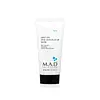What's inside
What's inside
 Key Ingredients
Key Ingredients

 Benefits
Benefits

 Concerns
Concerns

 Ingredients Side-by-side
Ingredients Side-by-side

Sulfur 10%
AntiseborrhoeicAlcohol Denat.
AntimicrobialWater
Skin ConditioningAzelaic Acid
BufferingPvp
Emulsion StabilisingCamellia Sinensis Leaf Extract
AntimicrobialSalicylic Acid
MaskingPapain
Skin ConditioningBromelain
Skin ConditioningMaltodextrin
AbsorbentGlycerin
HumectantMagnesium Aluminum Silicate
AbsorbentDisodium Carboxyethyl Siliconate
Skin ConditioningIllite
AbrasiveMontmorillonite
AbsorbentKaolin
AbrasiveCalcite
Skin ConditioningSodium Hydroxide
BufferingCI 77288
Cosmetic ColorantTitanium Dioxide
Cosmetic ColorantWater
Skin ConditioningZinc Oxide
Cosmetic ColorantPropanediol
SolventTitanium Dioxide
Cosmetic ColorantCetearyl Alcohol
EmollientBeeswax
Emulsion StabilisingC12-15 Alkyl Benzoate
AntimicrobialGlyceryl Stearate
EmollientGlycerin
HumectantPEG-40 Stearate
EmulsifyingPEG-100 Stearate
Dimethicone
EmollientSulfur
AntiseborrhoeicRicinus Communis Seed Oil
MaskingHydrogenated Castor Oil
EmollientCopernicia Cerifera Wax
Hamamelis Virginiana Water
AstringentCamphor
MaskingSalix Nigra Bark Extract
Skin ProtectingEpilobium Fleischeri Extract
Skin ConditioningChamomilla Recutita Flower Extract
MaskingBeta-Glucan
Skin ConditioningTocopheryl Acetate
AntioxidantMelaleuca Alternifolia Leaf Oil
AntioxidantBentonite
AbsorbentCoceth-7
EmulsifyingPPG-1-PEG-9 Lauryl Glycol Ether
EmulsifyingPEG-40 Hydrogenated Castor Oil
EmulsifyingXanthan Gum
EmulsifyingDisodium EDTA
Phenoxyethanol
PreservativeCaprylyl Glycol
EmollientWater, Zinc Oxide, Propanediol, Titanium Dioxide, Cetearyl Alcohol, Beeswax, C12-15 Alkyl Benzoate, Glyceryl Stearate, Glycerin, PEG-40 Stearate, PEG-100 Stearate, Dimethicone, Sulfur, Ricinus Communis Seed Oil, Hydrogenated Castor Oil, Copernicia Cerifera Wax, Hamamelis Virginiana Water, Camphor, Salix Nigra Bark Extract, Epilobium Fleischeri Extract, Chamomilla Recutita Flower Extract, Beta-Glucan, Tocopheryl Acetate, Melaleuca Alternifolia Leaf Oil, Bentonite, Coceth-7, PPG-1-PEG-9 Lauryl Glycol Ether, PEG-40 Hydrogenated Castor Oil, Xanthan Gum, Disodium EDTA, Phenoxyethanol, Caprylyl Glycol
Ingredients Explained
These ingredients are found in both products.
Ingredients higher up in an ingredient list are typically present in a larger amount.
Glycerin is already naturally found in your skin. It helps moisturize and protect your skin.
A study from 2016 found glycerin to be more effective as a humectant than AHAs and hyaluronic acid.
As a humectant, it helps the skin stay hydrated by pulling moisture to your skin. The low molecular weight of glycerin allows it to pull moisture into the deeper layers of your skin.
Hydrated skin improves your skin barrier; Your skin barrier helps protect against irritants and bacteria.
Glycerin has also been found to have antimicrobial and antiviral properties. Due to these properties, glycerin is often used in wound and burn treatments.
In cosmetics, glycerin is usually derived from plants such as soybean or palm. However, it can also be sourced from animals, such as tallow or animal fat.
This ingredient is organic, colorless, odorless, and non-toxic.
Glycerin is the name for this ingredient in American English. British English uses Glycerol/Glycerine.
Learn more about GlycerinSulfur is a commonly occurring element on Earth (and our universe!). In cosmetics, it helps kill bacteria, reduces sebum, and provides exfoliation. This makes it an effective ingredient to reduce breakouts and fight acne.
As a ketayolytic agent, it breaks down the top layer of skin. This is a form of exfoliation and may help decrease acne and hyperpigmentation.
Studies show sulfur has antibacterial and antifungal properties. Sulfur can be drying if used excessively or at higher concentrations. We recommend speaking with a medical professional if you have any concerns.
Ancient Greece, India, China, and Egypt have used sulfur in both traditional medicines and for household use.
Learn more about SulfurTitanium dioxide is a mineral UV filter widely used in sunscreens and cosmetics.
It is one of only two UV filters officially classified as “mineral” by regulatory agencies, the other being zinc oxide.
Titanium dioxide provides broad-spectrum protection mostly in the UVB and UVAII range, with some protection in the UVAI range.
While its UVA protection isn’t as strong as zinc oxide’s, the difference is minor.
A common myth is that mineral UV filters reflect UV light. However, modern research shows titanium dioxide absorbs UV radiation like chemical filters (~95% absorption & 5% reflection).
Thanks to its non-irritating nature, titanium dioxide is suitable for sensitive, acne-prone, or redness-prone skin. It is unlikely to cause "eye sting" like other sunscreen ingredients.
A major drawback of this ingredient is its white cast and thick texture. This is why mineral sunscreens often leave a white cast and are less cosmetically elegant than chemical/hybrid sunscreens.
To improve white cast and spreadability, micronized or nano-sized titanium dioxide is often used.
There are ongoing concerns surrounding nano-titanium oxide's impact on marine ecosystems.
There is no conclusive evidence that any form of titanium oxide (or any other sunscreen ingredients) will cause harm to marine ecosystems or coral reefs. The science is still developing but many consumers are keeping a close eye on this issue.
Please note, many destinations have reef-safety sunscreen rules. For instance, the U.S. Virgin Islands advises all visitors to use non-nano mineral sunscreens.
Nano mineral sunscreens once raised safety concerns about absorption into skin.
Extensive research has shown that they do not penetrate healthy or damaged skin; they remain safely on the surface and the top layer of dead skin (stratum corneum).
You'll likely find titanium dioxide bundled with alumina, silica, or dimethicone. These ingredients help make titanium dioxide highly photostable; this prevents it from interacting with other formula components under UV light.
Learn more about Titanium DioxideWater. It's the most common cosmetic ingredient of all. You'll usually see it at the top of ingredient lists, meaning that it makes up the largest part of the product.
So why is it so popular? Water most often acts as a solvent - this means that it helps dissolve other ingredients into the formulation.
You'll also recognize water as that liquid we all need to stay alive. If you see this, drink a glass of water. Stay hydrated!
Learn more about Water